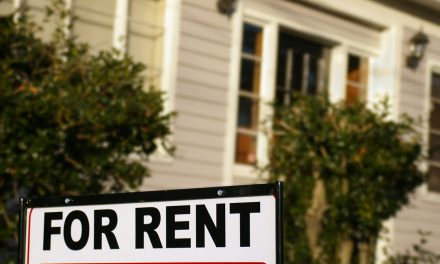San Francisco recently passed Prop C, doubling low- to middle-income housing requirements for new developments of 25 units or more throughout the city — and upsetting dissenters with a broader view of the housing recovery.
Under Prop C, new housing developments need to:
- include 25% of on-site units as inclusionary housing, broadly meaning properties suitable for low- to middle-income buyers;
- include 33% of off-site units as inclusionary housing; or
- pay a fee if they do not build inclusionary units.
Prop C specifically classifies “inclusionary housing” under two discreet parts:
- low-income housing as rented by earners of up to 55% of the area median income (AMI) or purchased by earners of up to 80% of the AMI; and
- middle-income housing as rented by earners of 100% of the AMI or purchased by earners of 120% of the AMI.
This means a standard two-person household earns approximately $45,000 – $65,000 annually to be considered low-income, and approximately $81,000 – $98,000 annually to be considered middle-income.
However, some developments are grandfathered out of the requirements with only minor increases in the previously required 12% of units. Projects with environmental reviews completed prior to January 2016 range from only 13% to 14.5% of units allocated for inclusionary housing.
As the inclusionary housing requirements only apply to new developments of 25 units or more, the financial analysis of land and improvement costs against the value of the completed project will cause some developers to simply cap their developments at 24 units. Thus, they preserve their right to charge market-rate rent on the entire project, a decision made when the highest and best use allowed by zoning is less than 35 units.
Opponents of Prop C — including the provocative Bay Area Renters Federation (BARF) — fear the requirements will ultimately lead to fewer new developments across the board, adding yet more weight to the Bay Area’s cumbersome housing burden and exacerbating the scarcity problem that continues to plague the region. The issuance of permits may initially slow as the city adjusts to the zoning, but builders are destined to build, and they are not myopic as a profit is involved when demand is so high. The city’s timing for best results is now, while tenant demand is at its height.
Does Prop C spell doom for developers?
San Francisco’s Housing Action Coalition estimates roughly 1,600 developments which don’t qualify for the grandfather treatment will not ultimately be built. These aborted projects, combined with other projects downsized to 24 units to avoid being subject to the requirements of Prop C, will culminate in an overall cumulative drop in new construction throughout San Francisco — the antithesis of what area residents actually need.
Proponents of Prop C have little to say on this regard, preaching instead the prophetic “MORE” to even out the allocation of housing units within reach for the diminishing middle class in the Bay Area.
However, requirements for increased allocation of inclusionary housing units have been known to push developers away. A recent example is Oakland’s implication of affordable housing impact fees, raising developers’ costs by thousands of dollars per unit. Remember: someone has to pay for this, and rents are a factor of wages which are not changing beyond the rate of consumer inflation. With building costs rather fixed and profit margins for builders being a necessity of commerce, it is the landowners that eventually will have to give on the price of land or nothing will be built. Worse, without the “numbers” for the deal to pencil out, lenders will not lend.
Further, a similar San Jose ordinance raising inclusionary housing requirements for new construction just recently prevailed after several years in a litigation battle against builders — and that was a comparatively modest 15% allocation for inclusionary units.
Prop C perpetuates such aversion, though not in the usual way. The limitations Prop C inadvertently establishes on construction lead directly to diminished land value for speculative land owners hoping to sell to developers at high prices brought on by demand for new rentals and condo units. However, the costs of construction (materials, labor) are inflexible; the cost of land is not, when the highest and best use of a parcel is set by zoning. Builders are sandwiched between land owners and the value of the completed project they build. Since the completed project under current zoning sets the market value of the builder’s best use of the property, they need to pay less for land to make up for additional costs imposed by Prop C’s requirements.
Thus, land owners clinging to money illusions about speculative past land values will temporarily refuse to lower their asking prices. Based on their belief their land value remains solid and rising, the cost increases to build a project must be, by land owners’ reasoning, pricing passed on to tenants and buyers. But tenants and buyers are limited by wages in what they can pay — a fixed figure unmoved by zoning activity.
Builders who are unable to purchase parcels and retain their profitability for a completed project in the current market will turn elsewhere to buy parcels at reasonable prices, which compensate for the additional inclusionary units Prop C imposes on the highest and best use of the parcel. It is always the land value that has to adjust in the long run, as it will here.
The Bay Area’s desperation to resolve its housing crisis is a catch-22 for land owners that will likely take years to break down the illusion of past land values. Inclusionary housing allocations like that of Prop C are directly beneficial for low- and middle-income residents — if (and only if) developers are financially sated enough to continue building subject to the inclusionary zoning requirements.
Some steps forward — like the governor’s affordable housing proposal which allows urban infill projects to evade environmental review — pave a path toward housing stability by keeping the NIMBYs at bay. For the moment though, requirements like Prop C potentially stagnate positive motion by deterring builders via stubborn, deluded land owners and speculating investors. Thus, the very problem Prop C is meant to address remains. In the short term, the stress on tenants will only heighten.
Regardless, the passage of Prop C reveals San Franciscans’ desire to do something to change the way housing is made available to its residents of modest means before it’s too late. Time to find a solution is waning as many San Francisco locals flee the city in search of manageable costs of living in other, less urban areas throughout the state, eager to employ their skills.














